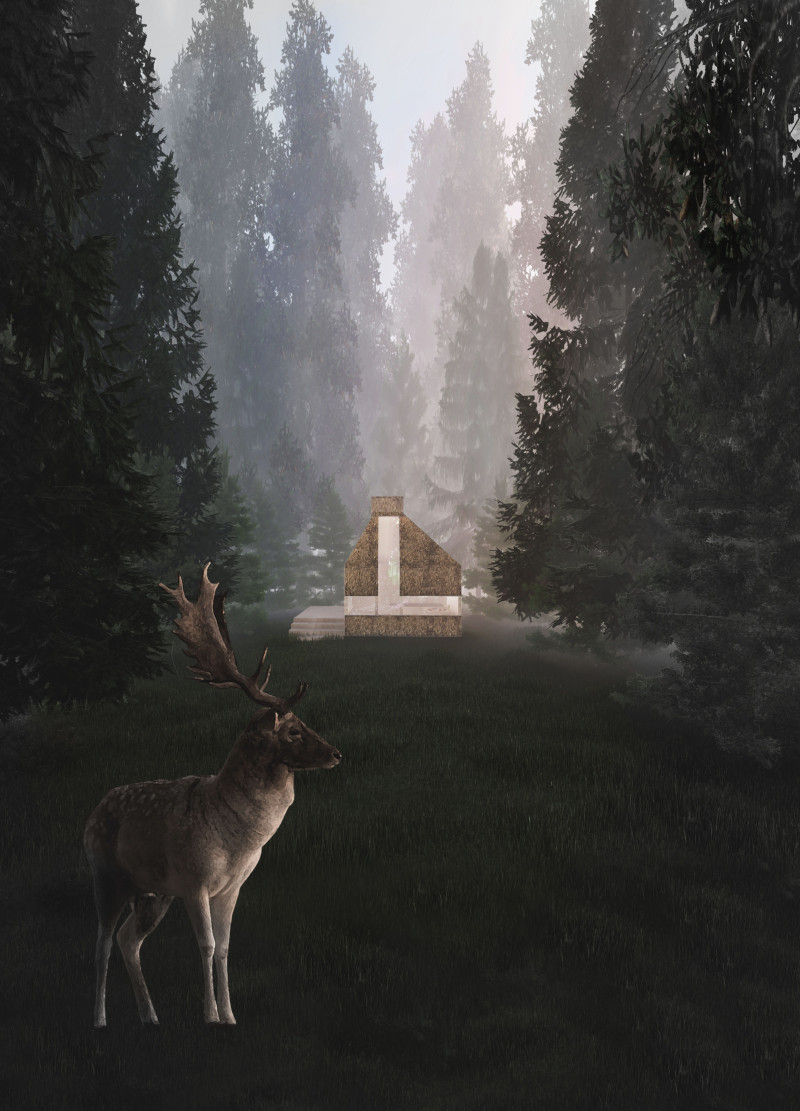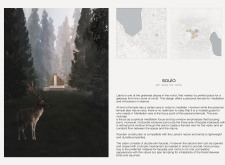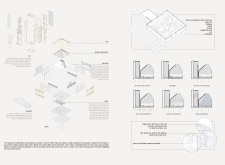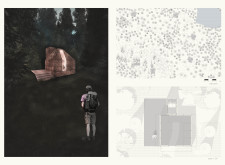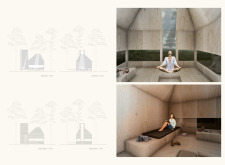5 key facts about this project
The project is situated in Latvia, a region characterized by its abundant greenery. It functions as a personal retreat, designed for meditation and quiet reflection. The overall concept focuses on blending with the surrounding nature, providing a peaceful space where users can disconnect and engage with their thoughts.
Meditation Axis
At the heart of the design is a meditation axis that organizes the layout of the cabin. This axis features a fire pit, serving as a central point for meditation. A well-placed top window highlights this focal point, while horizontal windows on three sides welcome natural light and create views of the outdoors. This arrangement fosters a strong connection between the interior and the natural world outside.
Structural Features
The cabin is built with a double-skin façade, which offers flexibility in terms of privacy. Wooden materials are chosen for their lightness and durability, consistent with the local environment. This choice helps the structure remain in harmony with its surroundings and reduces its impact on nature.
Functional Layout
Inside, the cabin includes clearly defined areas for sleeping, dining, and food preparation. These spaces are thoughtfully arranged to make the best use of the interior while supporting the peaceful purpose of the retreat. Each area is designed to be functional without being overwhelming, creating a comfortable and tranquil atmosphere.
Natural Light and Ventilation
Natural light and air flow are important aspects of the design. The space uses solar tubes to provide light during the night, ensuring the interior remains inviting. This attention to lighting contributes to a calm environment, making it suitable for quiet reflection and meditation.
The roof is crafted to support a natural thatching of hay, mimicking the shapes found in the surrounding landscape. This design not only contributes to the aesthetic but also provides opportunities for local birds to nest, further connecting the retreat with its ecological setting.


